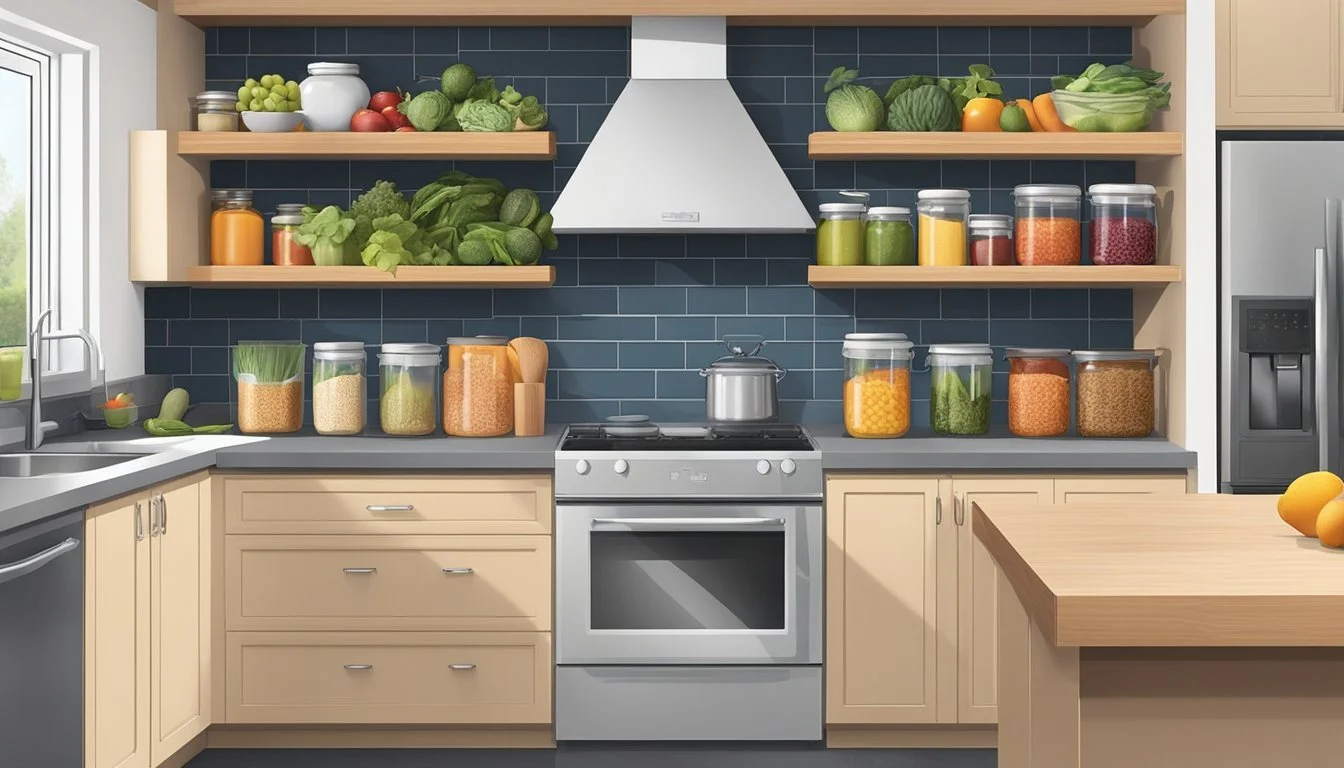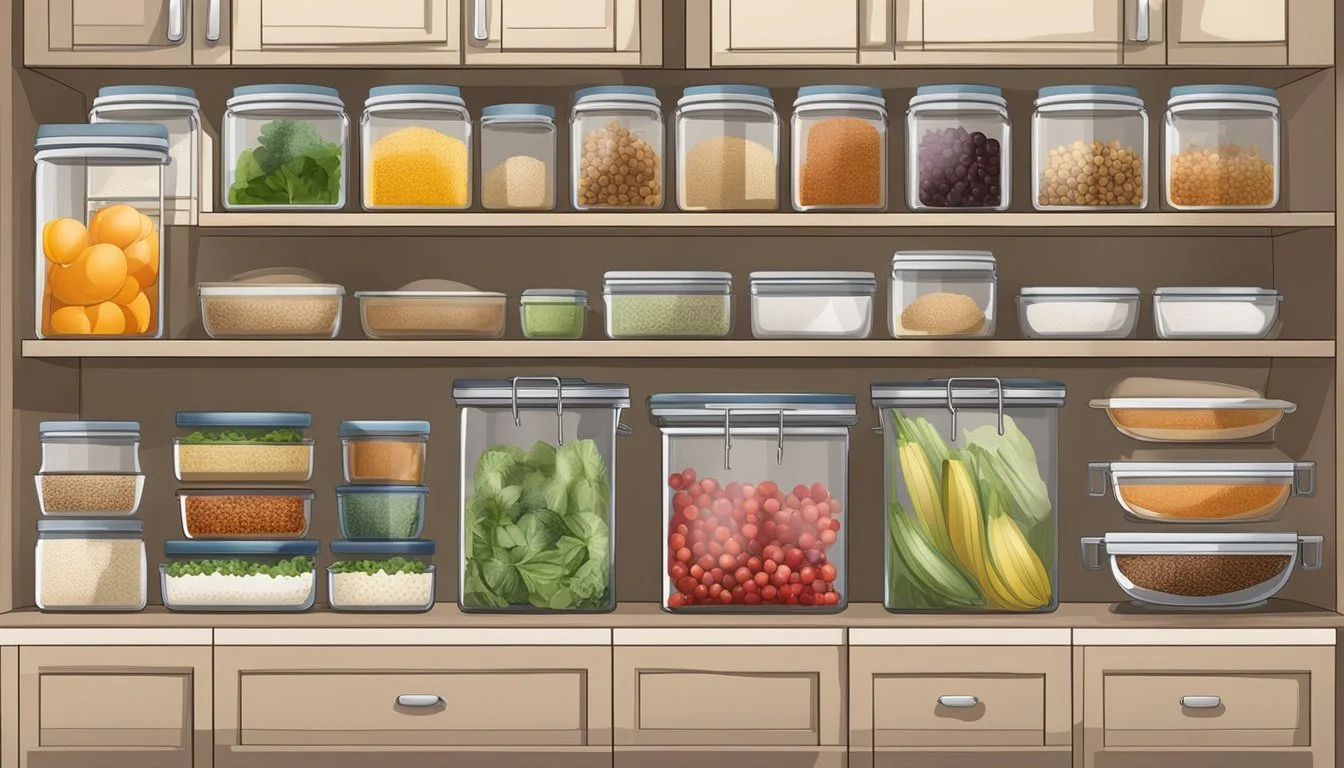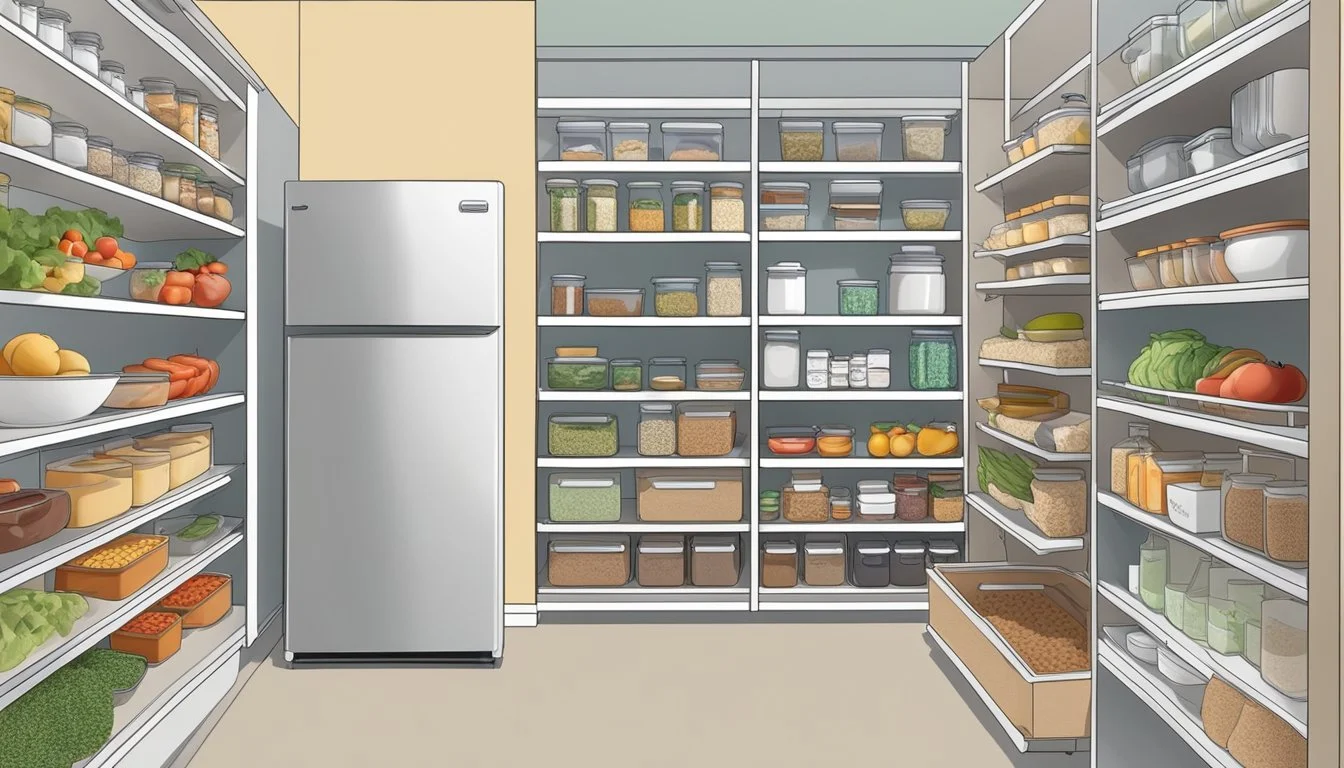Organizing Your Kitchen for a Low-Purine Diet
Practical Tips for Healthy Eating
Managing uric acid levels through dietary choices is crucial for individuals with gout, a type of inflammatory arthritis that can cause severe pain in the joints. A low-purine diet is often recommended since purines contribute to uric acid production in the body. By organizing your kitchen with this diet in mind, you give yourself the best chance to minimize gout flare-ups and the formation of kidney stones associated with high uric acid levels.
When setting up your kitchen, it’s essential to prioritize foods that are not only low in purines but also supportive of overall health. This includes fruits, vegetables, whole grains, and low-fat dairy products. Meanwhile, it's beneficial to limit the intake of high-purine foods such as red meats, organ meats, and certain seafood which can trigger gout symptoms. By carefully selecting and storing these foods, your kitchen becomes a cornerstone of your gout management strategy.
A kitchen tailored for a low-purine diet is not only about restriction but also about the abundance of healthy and nutritious options. Legumes, nuts, and lean sources of protein, like poultry, can be included in moderation. The goal is to create an environment that makes it easier to choose suitable foods and helps those affected by gout to maintain a balanced and enjoyable diet.
Understanding Purines and Their Effects on Health
Before diving into the specifics of a low-purine diet, it is crucial to comprehend the nature of purines and how they can impact health. They are closely related with conditions such as gout and kidney stones, making dietary management a key element for individuals affected by these disorders.
What Are Purines?
Purines are organic compounds that play a pivotal role in the body's metabolic processes. They are found in the cells of all living organisms and are crucial for the synthesis of DNA and RNA. When cells die and get broken down in the body, purines are converted into uric acid, a substance that is typically filtered out by the kidneys and excreted through urine.
Health Conditions Linked to Purines
Hyperuricemia, an excess of uric acid in the blood, can arise when the body produces too much uric acid or does not eliminate enough of it. This condition can lead to the formation of sharp, needle-like crystals in joints or soft tissues, causing painful arthritis and joint damage, commonly known as gout. In some cases, high levels of uric acid may also result in the development of kidney stones, posing further risks to kidney health.
The Role of Purines in Gout and Kidney Stones
For individuals with gout, a diet low in purines is often recommended because certain foods contain high levels of purines, which exacerbate the condition by increasing uric acid production. Such foods include organ meats, certain seafood, and others. Similarly, reducing purine intake can help manage and prevent kidney stones associated with uric acid. Attention to diet helps to maintain lower levels of uric acid, thereby minimizing the risk of crystal formation and subsequent health issues.
The Basics of a Low-Purine Diet
Adopting a low-purine diet is essential for managing conditions like gout and kidney stones. This dietary approach focuses on reducing the intake of purine-rich foods to lower uric acid levels in the body.
Principles of a Low-Purine Diet
The primary principle of a low-purine diet is to maintain balanced uric acid levels by consuming a variety of low-purine foods. Adequate hydration is another cornerstone, as it helps the kidneys to flush out uric acid effectively. People are advised to moderate their intake of foods with moderate purine content and to limit or eliminate those with high purine content.
Foods to Include
Fruits and vegetables: Most are low in purines. They should be a mainstay of one's diet.
Whole grains: Options like bread, rice, and pasta provide good nutrients with relatively low purine content.
Low-fat dairy products: Including milk, cheese, and yogurt, these can be part of a low-purine diet.
Water: Ample hydration with water is crucial for kidney health and uric acid excretion.
Foods to Avoid
The following foods have high purine levels and should be avoided:
Certain meats: Organ meats like liver and kidney have high purine levels.
Seafood: Some seafood, including anchovies, sardines, and tuna, should be consumed sparingly.
Sugary drinks: High intake of these may worsen uric acid levels.
By properly organizing a kitchen around these guidelines, individuals can effectively manage their dietary needs.
Nutritional Considerations and Alternatives
When adopting a low-purine diet to manage conditions like gout, one must consider protein sources, the balance of carbohydrates and fats, and the choice of beverages. Key to this dietary approach is selecting foods that are low in purines and understanding suitable alternatives.
Protein Sources on a Low-Purine Diet
Proteins are essential but can be high in purines. Choosing the right types is critical for a low-purine diet. While certain meats and seafood should be limited due to high uric acid content, options such as eggs, low-fat dairy products like milk and yogurt, and legumes like lentils and beans can be beneficial. Poultry and some types of fish are acceptable in moderation.
Good Protein Choices:
Eggs
Low-fat dairy products (milk, yogurt)
Legumes (beans, lentils)
Limited Protein Choices:
Select poultry
Certain fish
Balancing Carbohydrates and Fats
A balanced intake of carbohydrates and fats is vital for overall health, especially on a low-purine diet. Incorporate whole grains, breads, and pastas made from them, as they provide energy without the risk of increased purine levels. Healthy fats found in nuts and certain vegetable oils can help maintain cellular health without contributing to purine intake.
Recommended Carbohydrates:
Whole grain breads
Whole grain cereals
Pasta
Healthy Fats:
Nuts
Olive oil
Avocado
Alcohol and Beverage Choices
Alcohol, particularly beer, is high in purines and should be consumed with caution or avoided. Sugary drinks, including soda and some juices, present additional health risks and offer no nutritional benefits. It is advisable to drink plenty of water to help flush uric acid from the body. Tea and coffee, in moderation, can be acceptable as they are not linked to increased purine levels.
Beverages to Avoid:
Alcohol (especially beer)
Sugary drinks (soda, sugary juices)
Beverage Alternatives:
Water
Unsweetened tea
Coffee (in moderation)
Meal Planning and Kitchen Organization
For individuals managing gout through diet, planning meals and organizing the kitchen around a low-purine diet is crucial. This section will guide readers on compiling a targeted shopping list, efficient pantry and refrigerator arrangement, preparing meals that comply with dietary restrictions, and providing a sample menu.
Creating a Low-Purine Shopping List
A low-purine shopping list prioritizes the inclusion of items such as fruits, vegetables, whole grains, and low-fat dairy products, while minimizing high-purine foods like certain meats and seafoods. Plan to purchase:
Fruits: Cherries, oranges, and other citrus fruits.
Vegetables: Spinach, kale, and bell peppers.
Carbohydrates: Brown rice, whole grain cereals, and whole wheat pasta.
Proteins: Chicken breast, eggs, and legumes.
Dairy: Skim milk, low-fat cheese, and Greek yogurt.
Oils: Olive oil and flaxseed oil.
Organizing the Pantry and Refrigerator
Organizing the kitchen supports dietary adherence by making low-purine choices easily accessible. In the pantry, place high-fiber cereals, whole grain pasta, and whole grain rice at eye level, ensuring they are within immediate reach. In the refrigerator, categorize compartments:
Top Shelves: Store prepared meals and ready-to-eat low-purine foods.
Middle Shelves: Align dairy products next to fruits and vegetables for balance.
Lower Shelves: Keep raw ingredients like chicken and fresh produce separate.
Door: Dedicate space for condiments containing healthy oils.
Preparing Low-Purine Meals
Meal preparation is about combining low-purine foods to create balanced dishes without triggering gout symptoms. Cooking with olive oil provides a healthy fat option. Use lean chicken as a primary protein source, served with a side of vegetables and whole grains like rice or pasta, ensuring that portions reflect dietary needs.
Sample Menu for a Low-Purine Diet
A diverse weekly menu should include a variety of low-purine options to maintain a balanced diet. Here is a sample day's menu:
Breakfast: Scrambled eggs with olive oil, served with whole grain toast.
Lunch: Grilled chicken salad with mixed greens, topped with a vinaigrette dressing.
Dinner: Steamed salmon with a side of roasted vegetables and brown rice.
Snacks: Greek yogurt, carrot sticks, and fresh fruit.
Focusing on foods that align with a low-purine diet allows for numerous meal combinations while managing gout effectively.
Lifestyle and Dietary Behavior
Adopting certain lifestyle and dietary behaviors is essential in managing gout, focusing on reducing high uric acid levels and preventing painful flare-ups. Key strategies include developing habits to avoid gout exacerbation, maintaining a healthy weight, and ensuring proper hydration.
Important Habits to Prevent Gout Flare-Ups
Individuals with gout should aim to limit purine-rich foods such as red meats and certain seafood to reduce the risk of high uric acid levels. They may benefit from:
Diversifying protein sources, incorporating more legumes and nuts.
Incorporating fruits and vegetables broadly, as they are generally low in purines.
Maintaining a Healthy Weight
Achieving and maintaining a healthy weight is crucial for reducing the strain on joints and helping the kidneys remove uric acid. They should consider:
Reducing caloric intake if necessary, especially from sugary drinks and snacks.
Including whole grains and low-fat dairy products that can promote weight loss and provide essential nutrients.
Hydration and Its Importance
Adequate water intake is vital for preventing kidney stones and facilitating the excretion of uric acid. Individuals should:
Drink ample water throughout the day; at least eight 8-ounce glasses are recommended.
Limit beverages high in sugar or alcohol, as they can contribute to dehydration and high uric acid levels.
Dietary Supplements and Medication
When managing a low-purine diet, one must consider the role of dietary supplements and how certain medications might affect dietary choices. Ensuring appropriate nutrient intake while minimizing risks of negative interactions is key.
Vitamin and Mineral Supplements
People following a low-purine diet to help manage gout or kidney issues often benefit from certain vitamins and minerals that can help reduce inflammation and support overall health. Vitamin C has been shown to lower uric acid levels, and may be a useful supplement for those managing gout.
Recommended Supplements:
Vitamin C: May help reduce uric acid levels.
Calcium and Vitamin D: Important for bone health, particularly if dairy intake is limited.
One should always consult with a healthcare professional before adding supplements to ensure they are necessary and safe.
Medication Interactions with Diet
Medications for gout or related conditions like arthritis can sometimes interact with diet. Understanding these interactions is crucial as they can affect kidney function and the effectiveness of the medication. Some medications may increase uric acid levels, while others may require dietary modifications to work correctly.
List of Common Gout Medications and Considerations:
Allopurinol: May require adjustment of vitamin intake.
Colchicine: Can interact with certain vitamins and should be monitored.
Probenecid: Increases uric acid excretion and may necessitate dietary changes.
It is important for patients to discuss their dietary plans with their healthcare provider to ensure medications are working effectively and do not cause adverse reactions.
Understanding and Managing Gout
Gout is a painful condition characterized by elevated uric acid levels in the blood leading to inflammation and flare-ups in the joints. Effective management often includes a combination of medication and specific dietary practices.
The Impact of Diet on Gout
Diet plays a significant role in the management of gout. Uric acid is produced in the body during the breakdown of purines, which are substances found in various foods. When individuals metabolize purines, the process can lead to the accumulation of uric acid, and if not adequately excreted, it can crystallize in the joints, causing intense pain and inflammation. A low-purine diet aims to reduce the intake of foods high in purines, thereby decreasing uric acid levels to prevent gout flare-ups.
Foods to include in a low-purine diet:
Fruits and vegetables (except for high-purine variants like spinach and asparagus)
Whole grains
Low-fat dairy products
Plant-based proteins
Foods to limit or avoid due to high purine content:
Organ meats (liver, kidney)
Certain seafood (anchovies, shellfish)
Red meats
Sugary drinks and alcohol
Lifestyle Modifications for Gout Management
Lifestyle changes are essential in minimizing the risk of gout flare-ups and potential joint damage. Alongside maintaining a gout diet, individuals are encouraged to:
Hydrate sufficiently, as water can help facilitate uric acid excretion
Limit alcohol consumption, especially beer, which can increase uric acid production
Manage weight to reduce pressure on joints and help lower uric acid levels
Exercise regularly to improve overall health and joint function
Medication may also be prescribed to help reduce uric acid production or to improve its removal from the body. It is important to consult a healthcare provider to devise a holistic gout management plan that combines dietary controls, lifestyle adaptations, and appropriate use of medication.
Related Health Conditions and Dietary Considerations
Dietary choices significantly affect conditions like gout, which is influenced by uric acid levels, and can impact kidney health. Specific dietary adjustments can be beneficial in managing these conditions.
Impact of Diet on Kidney Health
The kidneys filter waste products from the blood, including excess purines, which are metabolized into uric acid. A diet high in purines can lead to an increased level of uric acid, which, in excess, may result in kidney stones or worsen kidney function. It is crucial for individuals with kidney-related concerns to manage purine intake and ensure adequate hydration to support kidney health.
Key Points for Kidney Health:
Limit Purine-Rich Foods: Red and organ meats, certain seafoods.
Stay Hydrated: Fluids help to dilute uric acid and promote its excretion.
Balance Diet: Incorporate low-purine choices like fruits and vegetables.
Relationship Between Diet and Arthritis
Diet can also play a pivotal role in managing arthritis, particularly gout, which is a type of inflammatory arthritis. Gout results from the crystallization of uric acid in the joints, causing intense pain and inflammation. Medications can aid in managing gout, but dietary choices are a fundamental part of treatment.
Key Points for Arthritis:
Low-Purine Diet: Emphasize fruits, vegetables, and whole grains; limit or avoid high-purine foods to reduce the risk of gout flare-ups.
Healthy Weight Maintenance: Excess weight can increase the strain on joints and potentially exacerbate arthritis symptoms.
Monitor Uric Acid Levels: Individuals with gout may benefit from regular monitoring to manage their condition effectively.








